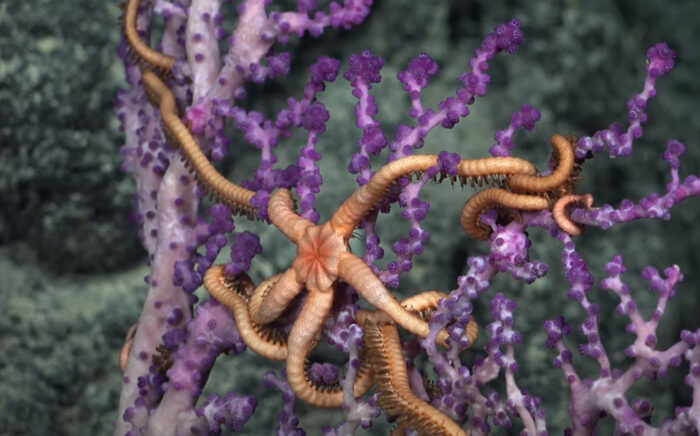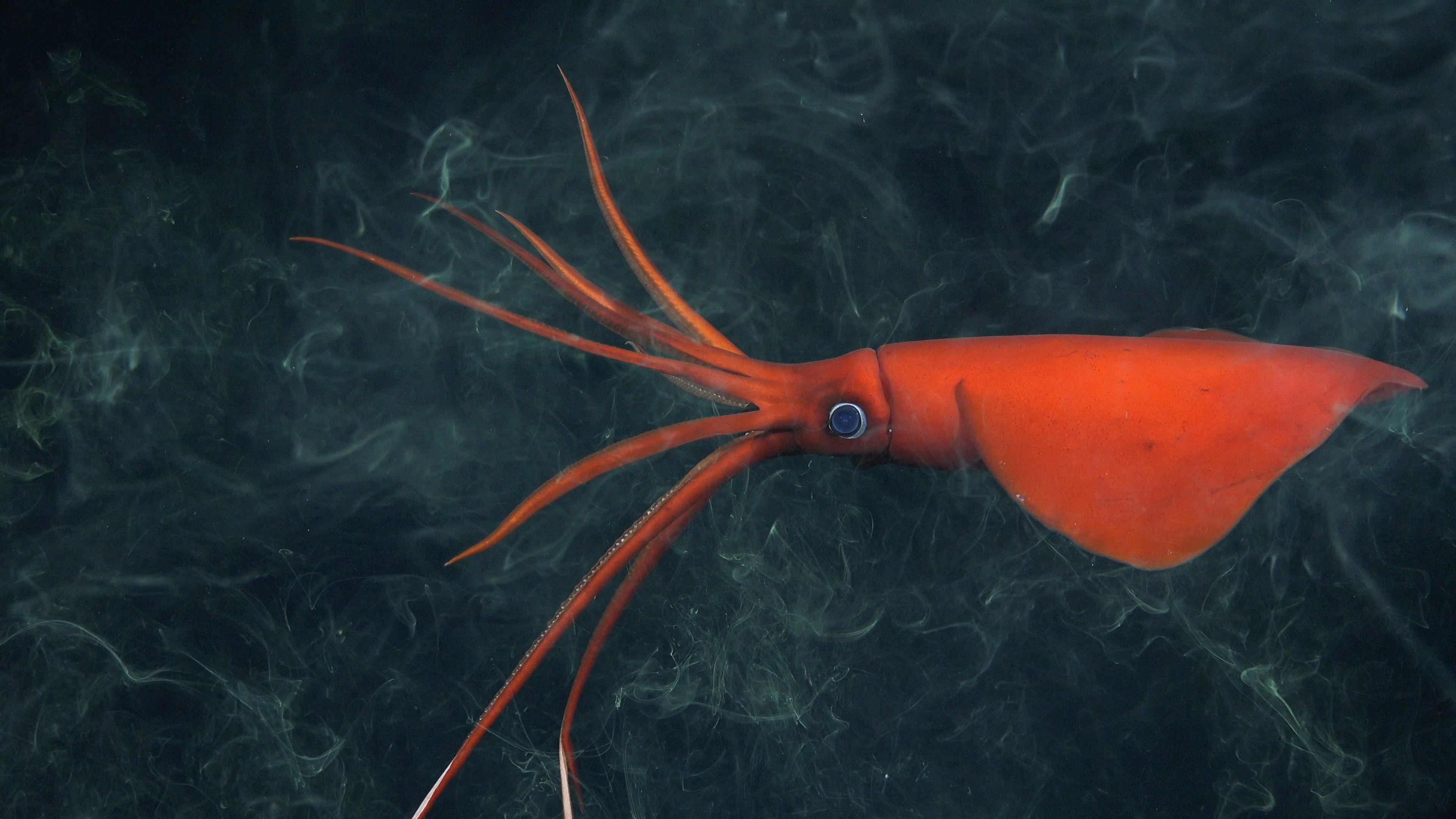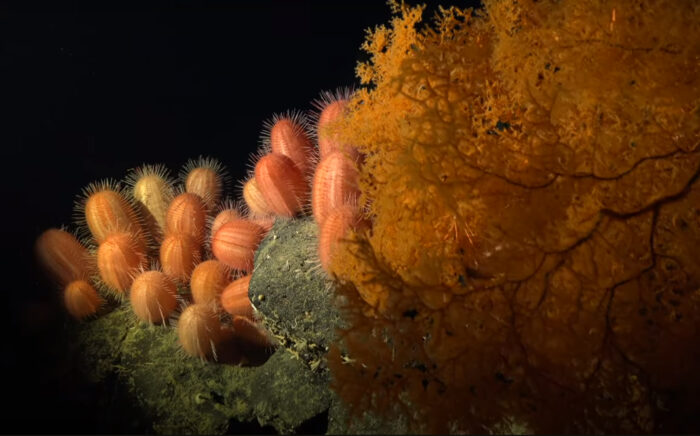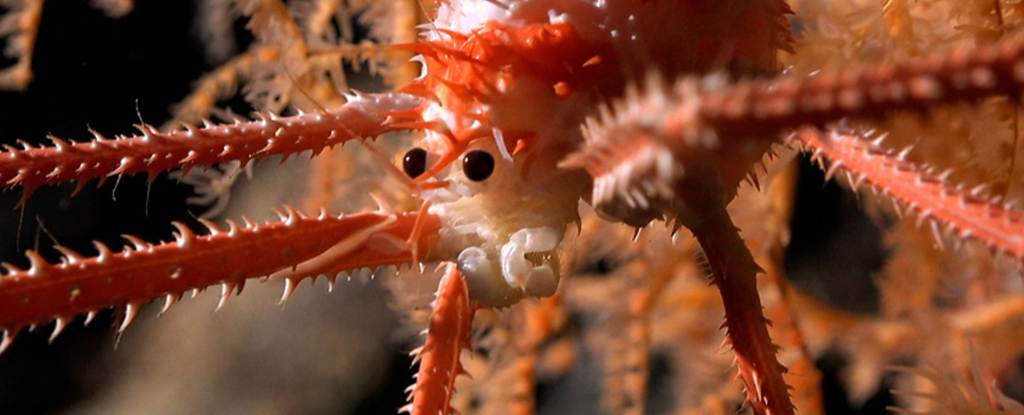On slopes of underwater mountains startlingly pink, grumpy-faced fish walk on fin-hands, and fiery red squid flee with alarms of ink clouds over sponge gardens and forests of deep-sea corals.
These incredible ecosystems, found off the coast of South America, include more than 100 species previously unknown to science. Each of the seamounts explored by the Schmidt Ocean Institute is home to distinct combinations of species.
“In these mountains we have found habitats that we did not even expect,” says Catholic University of the North marine biologist Javier Sellanes. “The results we have are extraordinary.”
frameborder=”0″ allow=”accelerometer; autoplay; clipboard-write; encrypted-media; gyroscope; picture-in-picture; web-share” allowfullscreen>
Experts at the Schmidt Ocean Institute are exploring a range of over 200 underwater peaks, which runs for 2,900 km (1870 miles) off the coasts of Chile and Peru, all the way to Rapa Nui (Easter Island).
This area is home to important fishery species, including swordfish and jack mackerel, and includes two marine parks, Juan Fernandez and Nazca-Desventuradas.
The team also searched beyond those protected areas, too. With the help of an underwater rover, descending up to 15,000 ft (almost 4.6 km), they found unique lifeforms that haven’t been seen anywhere else on Earth.
The high level of native species restricted to this area is likely due to the mountain range’s isolation, which is added to by the Atacama Trench, the Humboldt Current system, and a large area with low oxygen levels. What’s more, each seamount appears to have a unique ecosystem.
Among them are deep-sea corals, glass sponges, sea urchins, amphipods, squat lobsters, and much more.

“Full species identification can take many years, and Dr. Sellanes and his team have an incredible number of samples from this amazingly beautiful and little-known biodiversity hotspot,” says Schmidt Ocean Institute executive director Jyotika Virmani.
The researchers are now analyzing their footage and samples.
“What we have seen on these seamounts that we have visited is that each one has its own fauna, its own combination of environments,” explains Sellanes. “So it is not sufficient to only protect some of them. By just protecting some of them we are not protecting the total diversity that exists in the area.”

Up to a million multicellular species are thought to live within oceans that envelope 70 percent of our planet’s surface. We’ve only charted about 6 percent of the oceans’ floors in detail, leaving an estimated two thirds of these species still unknown.
Yet we’re already allowing these poorly understood places to be trawled and mined.
The expedition teams and their collaborators hope their work will bring awareness and protection to these surreal, sensitive, and highly biodiverse parts of Earth.

“What we have been able to observe is just a small fraction,” says Sellanes. “So it is likely that there are many, many wonderful things yet to be discovered in the area.”
Schmidt Ocean Institute launched another expedition focusing on the Salas y Gomez Ridge on February 24. The dives are being broadcast live on YouTube.
“We far exceeded our hopes on this expedition,” concludes Sellanes. “You always expect to find new species in these remote and poorly explored areas, but the amount we found, especially for some groups like sponges, is mind-blowing.”





